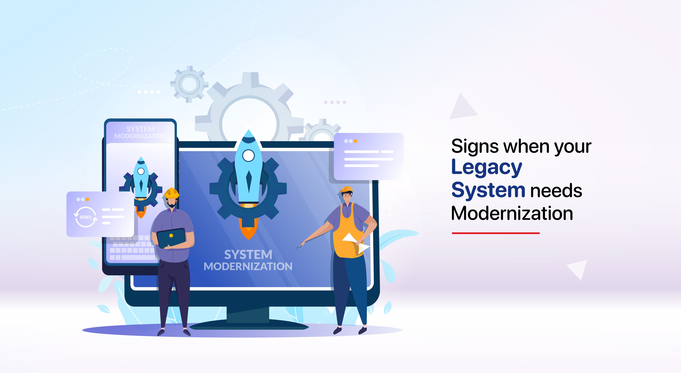Role of Agile Methodology in Legacy System Modernization


How agile can help you modernize your legacy systems quickly and efficiently.
In today's fast-paced and ever-evolving digital landscape, legacy systems can quickly become a hindrance to progress and growth for businesses. However, legacy systems are often deeply ingrained within a company's operations, making it challenging to replace them entirely. That's where agile methodology comes in. In this article, we will explore the role of agile methodology in legacy system modernization and how it can help businesses stay competitive in today's digital world.
What is Agile Methodology?
Agile methodology is an iterative approach to software development that emphasizes flexibility and collaboration between cross-functional teams. It values customer satisfaction and working software over comprehensive documentation and processes. Instead of a rigid, linear approach to development, agile methodology focuses on delivering software in small, incremental pieces. This allows for continuous feedback and adaptation throughout the development process.
Challenges of Legacy Systems
Legacy systems are outdated technology systems that are still in use by organizations. They often rely on outdated hardware and software that can be difficult to maintain and update. This can lead to a range of challenges for businesses, including increased security risks, higher maintenance costs, and reduced efficiency.
One of the most significant challenges with legacy systems is their inflexibility. They were often developed for a specific purpose and are not easily adaptable to changing business needs. This can result in a lack of scalability and hinder innovation and growth for businesses.
Legacy System Modernization with Agile Methodology
Agile methodology can help businesses overcome the challenges associated with legacy systems by providing a flexible and iterative approach to modernization. By breaking down the modernization process into small, manageable pieces, businesses can adapt and pivot as needed while still delivering value to customers.
One of the key benefits of using agile methodology for legacy system modernization is its focus on collaboration. Agile teams typically consist of cross-functional members, including developers, testers, and business analysts. This allows for a holistic approach to modernization, taking into account the needs and perspectives of different stakeholders.
Agile methodology also prioritizes customer satisfaction and working software over comprehensive documentation and processes. This means that businesses can focus on delivering value to customers quickly, rather than getting bogged down in paperwork and bureaucracy.
Benefits of Agile Methodology for Legacy System Modernization.
There are several benefits to using agile methodology for legacy system modernization, including:
1. Flexibility and Adaptability
Agile methodology provides a flexible and adaptable approach to modernization, allowing businesses to pivot and adjust as needed. This is particularly important in modernizing legacy systems, where there may be unexpected challenges and obstacles along the way.
2. Faster Time-to-Market
Agile methodology emphasizes delivering working software quickly and continuously. This can help businesses modernize legacy systems faster and get to market sooner, providing a competitive advantage in today's fast-paced digital landscape.
3. Improved Collaboration and Communication
Agile methodology promotes collaboration and communication between cross-functional teams. This can help to break down silos and ensure that all stakeholders are aligned and working towards a common goal.
4. Reduced Risk
By breaking down the modernization process into small, manageable pieces, businesses can reduce the risk of large-scale failures or delays. This allows for continuous feedback and adaptation, mitigating potential risks along the way.
5. Improved Quality
Agile methodology emphasizes delivering working software quickly and continuously. This can help businesses modernize legacy systems faster and get to market sooner, providing a competitive advantage in today's fast-paced digital landscape.
Conclusion
In conclusion, using agile methodology in legacy system modernization can help companies overcome challenges associated with outdated technology. It provides a structured approach to managing complex projects, encourages collaboration, accelerates time-to-market, reduces risk, and improves quality. With these benefits, it's no surprise that more and more companies are turning to agile methodology when modernizing their legacy systems.
Tag:Legacy- Modernization